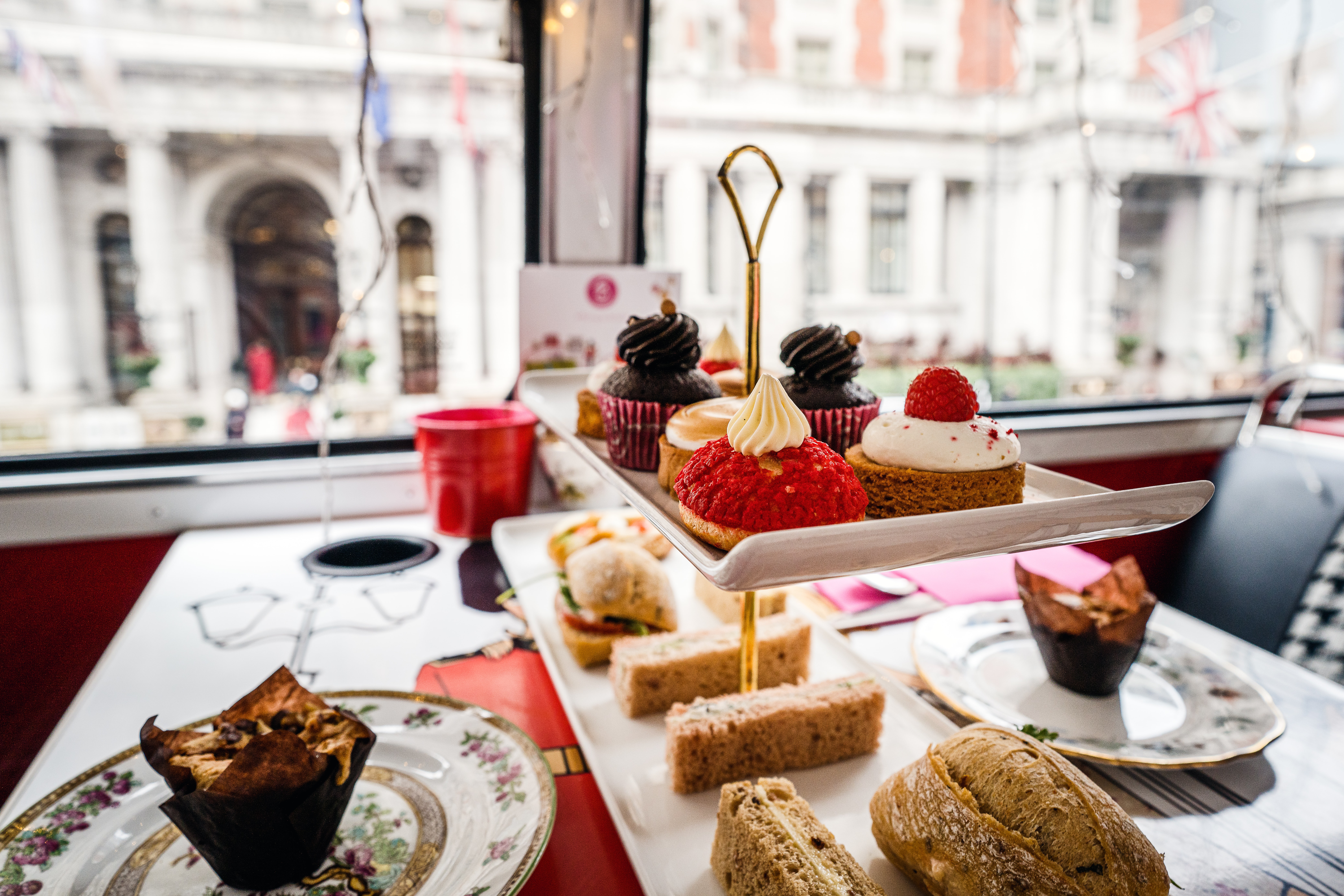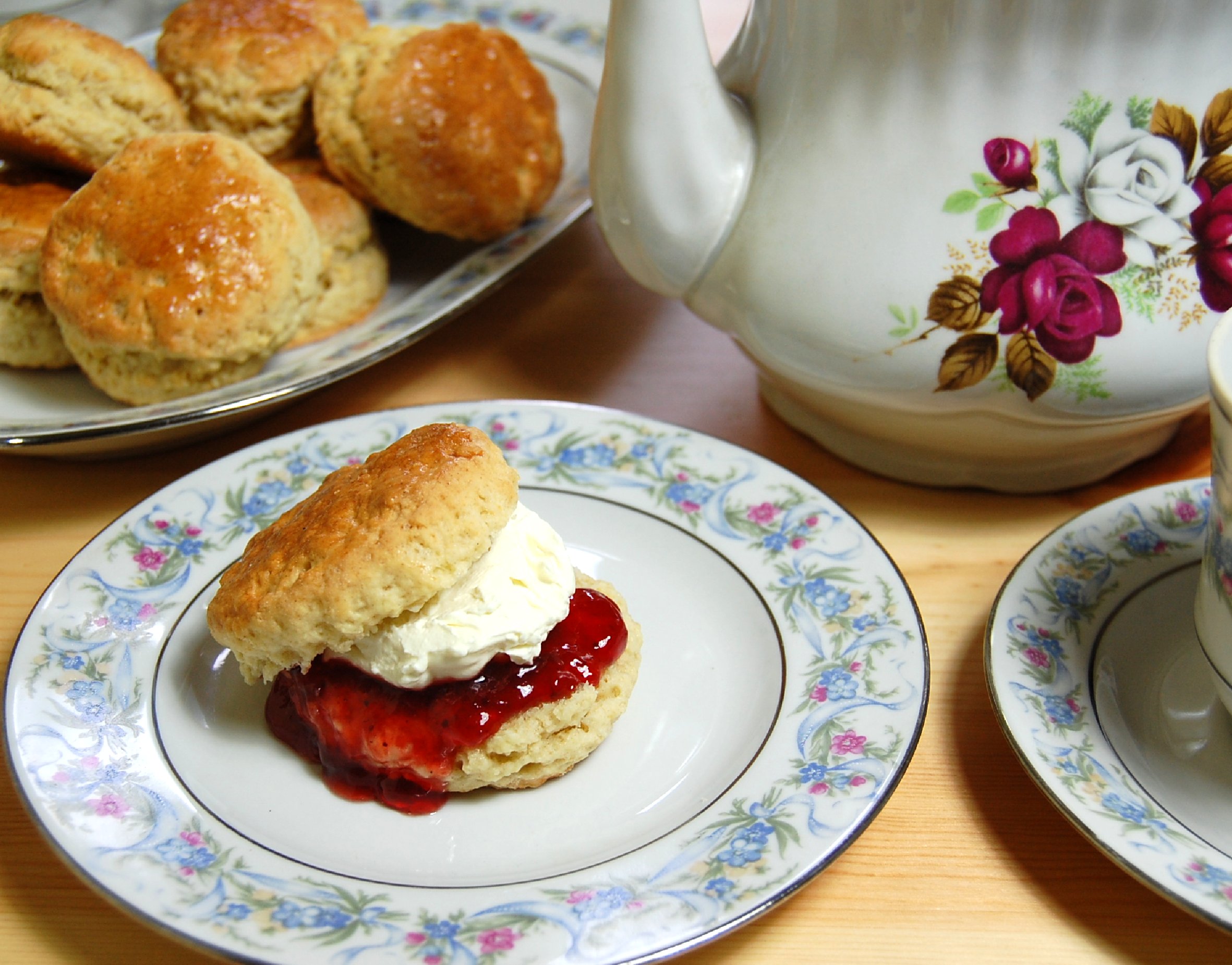
What’s not to love about the Regency Era? The gowns, balls, soirees, horse-drawn carriages, and so much more–for those who were of the upper classes, that is–as shown in Jane Austen adaptations and other Regency-era movies and TV shows have a dreamlike beauty. Part of the glamor of Regency England is all the amazing food they ate. Because they kept different schedules and observed different customs, eating lunch at noontime is a relatively modern tradition.
Keep in mind, the nobility and gentry began their day with a tray of tea or chocolate, fruit, and scones or croissants. Then, after dressing and grooming, they enjoyed a hearty breakfast in the breakfast room mid to late morning. Unless one was a hobbit, eating another full meal only an hour to two later must have seemed unnecessary. (I, clearly, am a hobbit for I have no such difficulties eating that often!)
Often, British-set historical novels use the terms “luncheon” and “nuncheon.” Yes, those terms did exist in Regency England, but they meant something different than what we modern counterparts usually eat between breakfast and dinner (or supper). Rather than a full meal, that midday food was more of a quick snack.
Samuel Johnson’s Dictionary of the English Language (1785) defines both terms:
Lunch or luncheon: As much food as one’s hand can hold.
Nunchion: A piece of victuals eaten between meals.
In Sense and Sensibility, Willoughby said of his journey: “I left London this morning at eight o’clock, and the only ten minutes I have spent out of my chaise since that time procured me a nuncheon at Marlborough.”
It’s even possible that few people used either the term luncheon or luncheon except at coaching inns.
In Persuasion, Mary Musgrove eats a bit of cold meat and then was “well enough to propose a little walk,” suggesting that she probably ate sometime in the early afternoon.
 When Austen’s characters ate between meals, they were informal, rather than a meal laid out on a table, unless one had callers. Even when entertaining, hostesses customarily served tea, fruit, or sweet cakes (Emma) or even a sandwich tray (Mansfield Park) to callers, a much-simplified version of the elaborate feasts they took for granted in the evening.
When Austen’s characters ate between meals, they were informal, rather than a meal laid out on a table, unless one had callers. Even when entertaining, hostesses customarily served tea, fruit, or sweet cakes (Emma) or even a sandwich tray (Mansfield Park) to callers, a much-simplified version of the elaborate feasts they took for granted in the evening.
Furthermore, the Online Etymology Dictionary describes luncheon/nuncheon as: “light repast between mealtimes,” 1650s (lunching; spelling luncheon by 1706); earlier “thick piece, hunk (of bread),” 1570s (luncheon), which is of uncertain origin. Perhaps it is based on northern English dialectal lunch “hunk of bread or cheese” (1580s; said to be probably from Spanish lonja “a slice,” literally “loin”), blended with or influenced by nuncheon (Middle English nonechenche, mid-14c.) “light mid-day meal,” from none “noon” (see noon) + schench “drink,” from Old English scenc, from scencan “pour out.”
As an author, I often can’t help myself and end up writing a luncheon scene somewhere in the story. Food is important to me, so I like to feed my characters unless I’m putting them through a special hardship. Still, it’s more likely people in the Regency ate what we term a “quick bite,” if at all.
Sources:
Jane Austen’s Table by Robert Tuesley Anderson
https://www.etymonline.com/word/luncheon
https://www.regencyhistory.net/2021/05/lunch-in-regency.html
https://blogs.lib.umich.edu/beyond-reading-room/dining-jane-austen-ii-no-such-thing-lunch

I could totally eat like they did back then.
My life doesn’t fit that schedule, though.